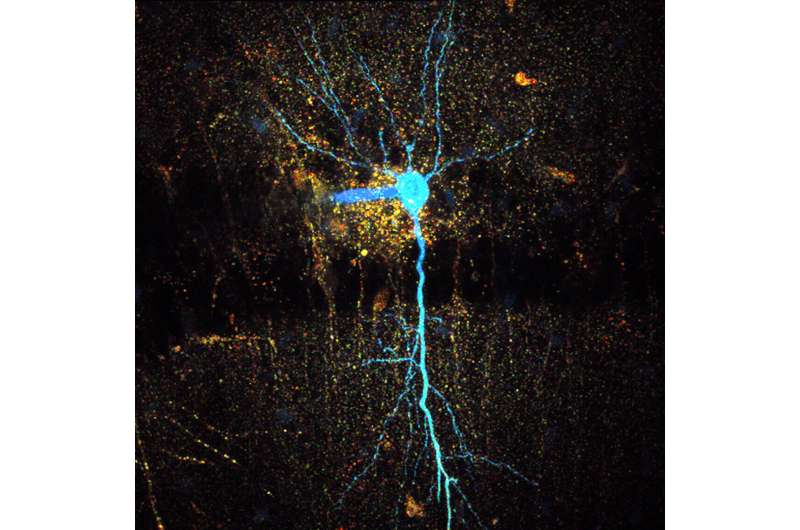New imaging method reveals causes of cerebral edema

Cerebral edema is a dangerous complication in many brain-related conditions such as strokes. Researchers at the Institute of Neurobiology at Heinrich Heine University Düsseldorf (HHU) have developed a new measurement method in collaboration with colleagues from Bonn and with the involvement of a Berlin-based optoelectronics company that enables better understanding of the cellular causes of cerebral edema. In the latest issue of the The Journal of Neuroscience they describe how the TRPV4 ion channel in particular plays an important role.
Our brain is well-protected by the bone of the skull. However, many illnesses lead to swelling of the cerebral tissue, which is referred to as "cerebral edema." As the brain cannot expand within the skull, this swelling often results in a dangerous rise in intercranial pressure. This in turn damages further brain cells and may, for example in the case of causative strokes, further impair blood supply to the brain.
There are many causes of cerebral edema, yet even today there are few therapeutic approaches for treating them successfully. Consequently, many patients require an operation to remove part of the skull bone—a so-called craniotomy—to ensure sufficient space for the brain. However, this operation is not without risks—and it does not eliminate the dangerous swelling.
In collaboration with the company Picoquant, Professor Dr. Christine Rose and her team from the Institute of Neurobiology at HHU have now developed a new method with which they can depict the changes that lead to the swelling of nerve cells in real time. This imaging method, known as "rapidFLIM" (Fluorescence Lifetime IMaging), permits the depiction of cellular processes at an unprecedented temporal resolution. Professor Dr. Christian Henneberger from the University of Bonn provided further conceptual support.
In the paper they have now published, the researchers recreated the conditions to which nerve cells are exposed during an ischaemic stroke in the laboratory. Dr. Jan Meyer, one of the two lead authors of the study, says that "using rapidFLIM we can show that a breakdown in cellular energy supply—one of the principal side effects of a stroke—results in nerve cells quickly becoming charged with sodium ions. This in turn is a key cause of the subsequent swelling of cells."
Dr. Niklas Gerkau, co-lead author, adds that "previous methods were unable to depict properly how this sodium charging develops over time and its extent. Combining rapidFLIM with our high-resolution, multi-photon microscopy opens up new perspectives for us and allows a better understanding of the sodium regulation of nerve cells."
In their study, the researchers also discovered a previously unknown mechanism for this fatal sodium charging in which the TRPV4 ion channel in the nerve cells plays a key role. This channel is instrumental in determining how much of the element sodium enters the cell. Professor Rose comments that "the TRPV4 channel is a promising starting point for limiting cellular damage and infarction size after an ischaemic stroke."
More information: Jan Meyer et al, Rapid Fluorescence Lifetime Imaging Reveals That TRPV4 Channels Promote Dysregulation of Neuronal Na+ in Ischemia, The Journal of Neuroscience (2021). DOI: 10.1523/JNEUROSCI.0819-21.2021




















